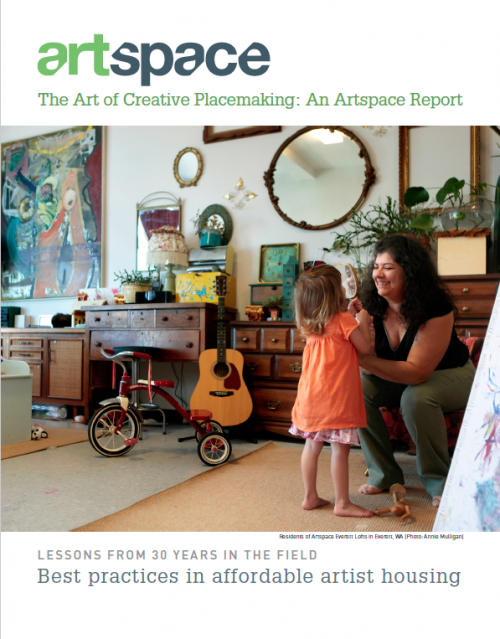When Artspace was founded in 1979, our role was to help artists find affordable places to live and work, which was largely achievable as long as artists were willing to move every six to 12 months. But we believed that artists sacrifice a tremendous amount in order to create their work, and that the work they create adds value and meaning to our lives. We believed that artists deserve better than living under constant threat of eviction, and that the only way we could provide greater stability was to create and own affordable housing specifically dedicated for artists. And we believed these art spaces should remain permanently affordable.
A beautiful vision, but the truth is back then we had a skeletal staff, no money, and at times, no clue! We progressed slowly, with lots of trial and error, and incredible help from a broad network of people who knew a lot more than we did — about real estate, financing, city politics, design and construction, the space needs of artists, and property management. When we started, the federal Low Income Housing Tax Credit law had just been enacted, and our Northern Warehouse project in St. Paul was the first project to use this new resource specifically to address the needs of artists.
Although the Northern was a huge organizational leap, it worked — and 30 years later it remains a vibrant, affordable home for artists at the center of a dynamic neighborhood. Building on what we learned, we tried it again (and again) in Minnesota, learning as we grew. With a few successes under our belt, we began to expand beyond Minnesota, discovering how to be “local” in a wide range of communities. With each new project in each new city, we learned a little more.
In this report, we share some of the best practices that we have developed over 30 years in the field. The expertise we’ve gained over the years results in projects that reflect the community through their design, culture, and diversity; connect with and contribute to the neighborhood’s economic and cultural vitality; engage diverse partners, allowing multiple, complementary agendas to be served; ensure that the significant community investment in the project is kept financially stable and strong over time; and facilitate long-term creative sustainability for neighborhoods.
Our goal in sharing our best practices is to help orient other practitioners and communities that are interested in artist-led community transformation. Through collaboration and sharing of ideas, we can all impact the future and success of creative placemaking.
Sincerely,
Kelley Lindquist, President of Artspace

